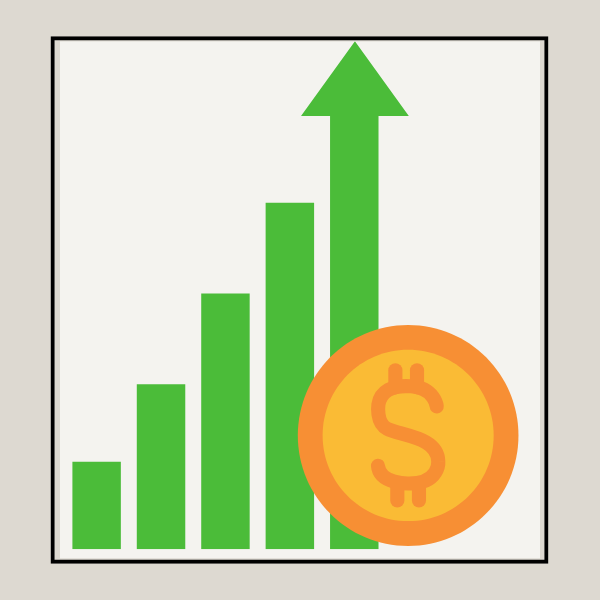Why Coffee Prices Have Increased in 2025 — And What Comes Next

If you’ve walked into your favorite café recently and noticed your usual latte has gotten more expensive, you're not imagining things. Coffee prices have surged in 2025, and the reasons are layered and complex. While a cup of coffee might feel like a simple pleasure, the journey from bean to cup is subject to global influences — weather, international trade, and even Wall Street.
Let’s break down the main factors behind this year’s price hike — and why coffee pricing can swing so wildly from one season to the next.
The Impact of Weather and Drought in Producing Countries on Coffee Prices

Coffee farming is highly sensitive to environmental conditions. In 2025, weather disruptions have played a major role in pushing prices higher. Brazil — responsible for about one-third of the world’s coffee — has faced ongoing drought conditions, severely affecting both Arabica and Robusta coffee crops. These droughts reduce bean size and yield, cutting down the total volume available for export.
Other key countries, like Vietnam and Colombia, have also experienced climate stress — from erratic rain patterns to extended dry spells and even unexpected frosts in higher elevations. With less coffee making its way out of farms and into export warehouses, global supply has tightened dramatically.
Add in climate change, and the unpredictability grows. Rising temperatures and changing weather patterns are making coffee-growing regions less reliable year after year, pushing producers to higher elevations — and increasing costs.
Tariff Uncertainty Is Shaking Up Trade Relationships
In early 2025, U.S. policymakers implemented new tariffs on imported coffee beans from several major producing nations, including a 10% duty on Brazilian imports. The move was part of a broader trade reshuffle aimed at renegotiating agricultural import relationships — but it sent ripples through the industry.
Tariffs increase the cost of goods imported into the U.S., and that cost is often passed down the line — from importers to roasters, and finally, to you, the consumer. Many small-to-medium roasters in the U.S. have already warned that these tariffs could lead to long-term pricing shifts if trade policies aren’t stabilized soon.
And while current tariffs are already affecting prices, the bigger issue might be uncertainty. With ongoing trade negotiations and potential for more policy changes, importers and roasters are bracing for even more volatility in the months ahead.
Traded Commodity: Coffee on the Futures Market, Rising Coffee Prices

Coffee isn’t just a crop — it’s a commodity, actively traded on global futures markets like the ICE (Intercontinental Exchange). That means traders can buy contracts for future deliveries of coffee, based on predictions of supply and demand. While futures trading can help stabilize prices and hedge against risk, it also opens the door to intense speculation. Market Watch
In 2025, speculation has played a big role in driving prices higher. When traders see signs of drought, reduced yields, and unstable trade relationships, they often react by buying up contracts — anticipating future scarcity. This activity can drive prices up even before the actual shortages occur.
And when sentiment shifts, it can swing the other way just as fast. That’s what makes coffee pricing so volatile — it’s not just about what’s growing in the fields; it’s also about how traders think the harvest will turn out. Coffee can go from boom to bust in weeks depending on weather reports, policy announcements, or currency shifts.
The Bigger Picture: A Decade of Low Prices Comes to an End
Over the past 10 years, coffee prices had remained relatively low, thanks in part to strong global supply and better logistics. Many farmers, however, were selling beans at or below the cost of production, leading to financial strain and reduced reinvestment in farms.
What we’re seeing now could be viewed as a long-overdue market correction — a rebalancing to reflect the true cost of sustainable coffee production in a changing world. But for businesses and consumers used to affordable coffee, the adjustment is sharp.
These price increases are unlikely to go away overnight. If anything, they may become the new normal — especially as climate challenges worsen and global demand continues to rise.
So, What’s Next?
The coffee industry is no stranger to turbulence. With its deep ties to climate, international policy, and financial speculation, the market is always in motion. But 2025 is proving to be a particularly volatile year — and one that may reshape how we think about our daily cup.
The good news? We consistantly are seeking out direct-trade relationships with farmers, investing in more sustainable sourcing, and diversifying their bean portfolios. These steps can help buffer against future shocks — and ensure long-term viability.
Still, prices may continue to fluctuate. As of now, there's no firm timeline on tariff decisions or a guaranteed end to the weather challenges impacting top producers. Uncertainty remains the name of the game.
Final Thoughts
The spike in coffee prices in 2025 is more than just a temporary blip — it's the result of a global supply chain under pressure from weather, politics, and financial markets. For coffee lovers, that means higher prices and greater awareness of the forces behind the scenes. For businesses, it’s a call to adapt, stay informed, and find sustainable ways forward.
As we sip our way through these changes, one thing remains certain: coffee, like the people who grow and enjoy it, is resilient.

